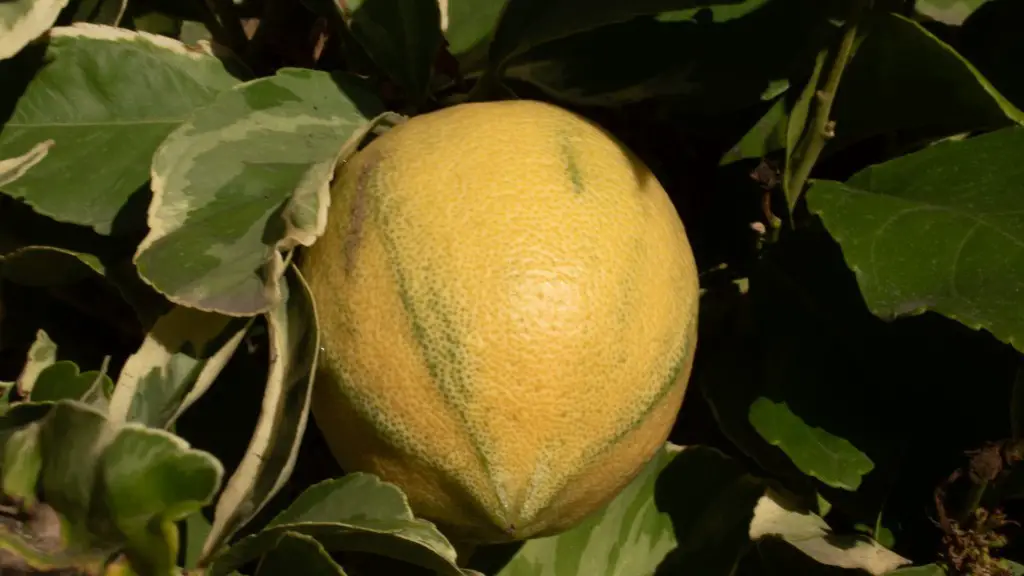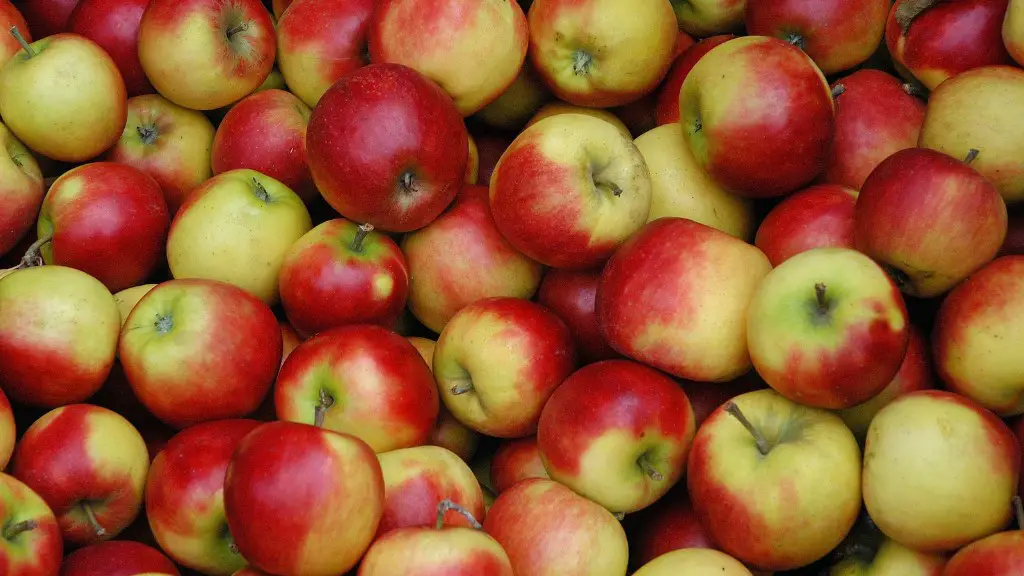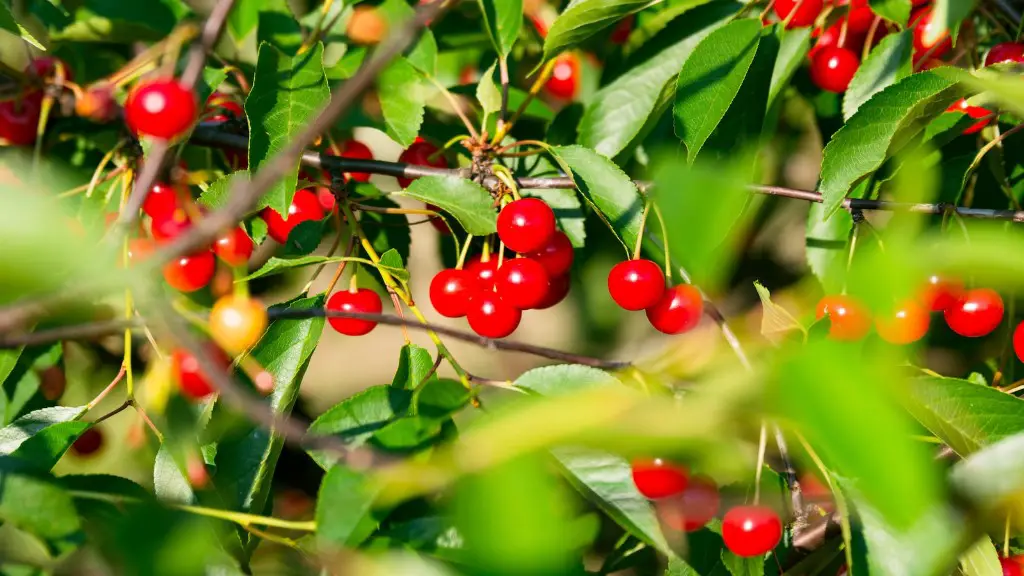Texas has long been known for its warm and sunny climate, which can make it a great place to grow fruit trees. Lemon trees, in particular, thrive in areas with long, hot summers and mild winters. But growing a lemon tree in Texas is not as easy as getting it to thrive in other parts of the country. There are a few steps that need to be taken to ensure that the lemon tree will flourish in Texas.
The first and most important step is to make sure the lemon tree is planted in an area with ample sunlight and well-drained soil. Lemon trees prefer full sun in areas that don’t become too hot during the summer months. The soil should not be too wet or too dry; it should be moist but well-draining, allowing for the roots to get enough oxygen. Adding organic material such as compost to the soil can help create the perfect growing environment for a lemon tree.
In the Texas climate, lemon trees are considered deciduous, meaning they go dormant in the winter and drop their leaves. Therefore, it’s best to plant your lemon tree in late spring, so the roots have several months to become established before the cold months hit. Mulching the lemon tree in the spring and fall can help protect its roots from temperature extremes.
When caring for a lemon tree in Texas, it’s essential to provide enough water. Lemon trees should be watered deeply and regularly so that the soil is kept evenly moist. It’s important not to overwater the tree, however, as this can cause root rot. It can also help to apply a slow-release fertilizer or compost tea in spring and summer to give the tree the nutrients it needs to stay healthy.
In Texas, lemon trees may be prone to pests such as citrus greening or citrus scale, so it’s important to monitor the tree for signs of infestation. Check the leaves and fruit for yellowing, mottling, or spots, as these can all be signs of an infestation. If you do find pest problems, it’s best to contact an arborist or pest control specialist to help take care of the issue.
Finally, be sure to prune the lemon tree in the late winter or early spring to encourage healthy growth. Pruning can help the tree grow in a more uniform manner, and can also help prevent pest infestations. Prune the branches and foliage to keep the shape of the tree uniform and ensure the sunlight can reach all parts of the tree.
Identification of pest problems
When dealing with a lemon tree in Texas, it is important to recognize when an infestation has begun. Signs of pest infestations may not be as obvious in the early stages, but if caught quickly, they can be dealt with before it is too late. Careful observation of the foliage and fruit is essential, as some of the common signs of an infestation may include yellowing, mottling, spots, or other discolorations. If the signs are caught early, it is best to contact a professional who can take care of the issue.
Inspecting the tree can also help to discern whether there is an issue with pests. Taking note of branches or twigs with gnarled foliage, sunken areas, powdery exudates, or sooty mold on leaves can all be indicators of an infestation. Be sure to closely examine the undersides of the leaves, as this is typically where the pests will hide. In addition, sticky deposits or sawdust on the surface of the tree or in crevices and joints of the branches can often be an indication of issue.
If an infestation is suspected, it is important to take action quickly and contact a professional for assistance. A certified arborist or pest control specialist can help identify the specific pest and set up a plan that can be used to effectively and safely manage the problem.
Citrus Greening
One of the most common pests that can affect a lemon tree in Texas is citrus greening, or Huanglongbing (HLB). This bacterial disease is spread by a small insect called the Asian citrus psyllid (ACP). Affected trees will experience yellowing, mottling, and curling of the leaves, as well as stunted shoots and decreased fruit quality. This pest can be difficult to control, as the Asian citrus psyllid can be difficult to locate and eradicate.
Treating citrus greening requires an integrated pest management program that encompasses both chemical and cultural tactics. Chemical treatments are typically used to manage populations of the ACP and include the use of insecticides and horticultural oils. Cultural tactics to help manage populations of ACP may include introducing beneficial insects such as ladybugs and lacewings, providing resources such as nectar and water, as well as monitoring and trapping.
Maintaining a healthy tree also plays a big role in preventing the spread of citrus greening. It is important to fertilize regularly, prune appropriately, and water deeply and effectively. Monitoring for signs of the disease is important, as even healthy trees in the same area as affected trees may become infected with the disease.
Citrus Scale
Another common pest that can affect a lemon tree in Texas is citrus scale. This insect is often found in dense clusters on the branches and stems of citrus trees, and will feed on sap and cause damage to the tree. Citrus scale can be managed with a variety of chemical and cultural techniques. Chemical options include insecticides such as horticultural oils, pyrethrins, and neem oil.
In addition to chemical treatments, pruning affected branches is an effective way to manage Citrus scale infestations. It is important to prune dead or heavily infested branches to reduce the amount of available food sources for the pests. Pruning should be done in late winter or early spring to prevent further damage from the disease.
Maintaining healthy trees is also critical to successful management of Citrus scale infestations. It is important to fertilize fertilize accurately and water deeply and regularly to ensure a robust and healthy tree. Weeds should also be controlled to ensure that any potential pests do not find a new food source in the lemon tree.
Preventative Care
Preventative care is key to ensuring that your lemon tree remains healthy and free of pest infestations. Proper cultural practices such as keeping the tree vigorous, providing enough water and fertilizer, and pruning appropriately can all help to keep the tree healthy and prevent pest problems before they start.
In addition, monitoring for pests is essential to prevention and treatment. Regularly checking for signs of infestation, or taking note of any changes in the tree’s appearance are both important methods of keeping the tree in shape. Additionally, introducing beneficial insects into the area surrounding the tree can help to reduce the chance of any pest infestations as the beneficial insects will actively hunt down any pests that may be present.
Lastly, it is important to be aware of the common pests that may affect lemon trees in Texas and their corresponding symptoms. Knowing what to look for is key to preventing and controlling pests, and can help keep the tree in good shape year after year.


